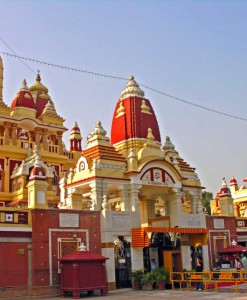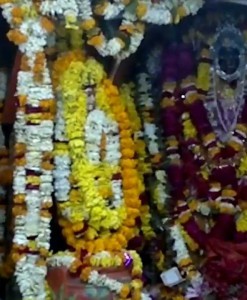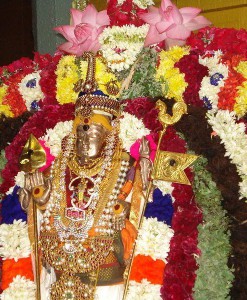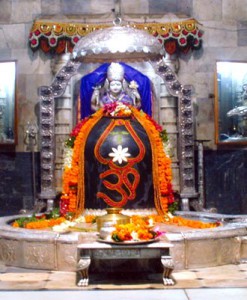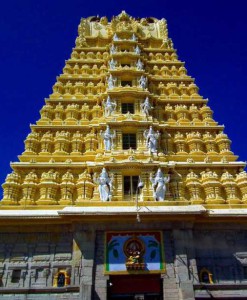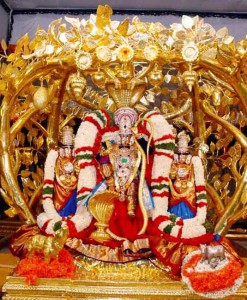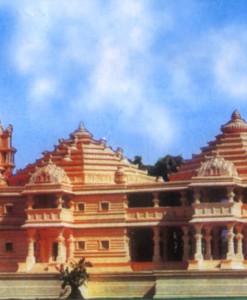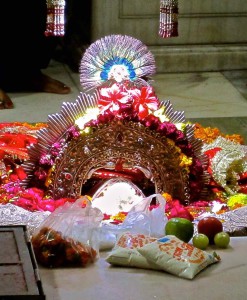No products in the cart.
Ram Janmabhoomi is the name given to the site that many Hindus believe to be the birthplace of Rama, the 7th avatar of the Hindu deity Vishnu. The Ramayana states that the location of Rama’s birthplace is on the banks of the Sarayu river in the city of Ayodhya in Uttar Pradesh. There is little historical evidence for the claim regarding the precise location. Hindu tradition maintains that a temple existed at the site in historical times. In 1528, a Mosque was built at the site by the Mughal general Mir Baqi, and named the “Babri Masjid” in honor of the Mughal Emperor Babur. From 1528 to 1853 the Mosque remained a place of worship for Muslims. Following communal disputes in 1853, a separate area near the mosque was earmarked for Hindus to perform religious ceremonies.
In 1949 an idol of Rama was surreptitiously placed inside the mosque. Following Muslim outrage and a legal dispute, the gates to the mosque were locked. In the 1980s the Vishwa Hindu Parishad and the Bharatiya Janata Party launched a campaign to build a temple at the site. In 1992, a rally for this movement developed into a riot involving 150,000 people that led to the demolition of the Mosque. Since then, the future of the site has been debated in court. The debate around the history of the site is colloquially known as the Ayodhya dispute.
Ram Janmabhoomi;
According to historian Ram Sharan Sharma, “Ayodhya seems to have emerged as a place of religious pilgrimage in medieval times. Although chapter 85 of the Vishnu Smriti lists as many as fifty-two places of pilgrimage, including towns, lakes, rivers, mountains, etc., it does not include Ayodhya in this list.” Sharma also notes that Tulsidas, who wrote the Ramcharitmanas in 1574 at Ayodhya, does not mention it as a place of pilgrimage. According to historian Romila Thapar “If we do not take Hindu mythology in account the first historical description of the city dates back recently to the 7th century, when the Chinese pilgrim Xuanzang observed there were 20 Buddhist temples with 3000 monks at Ayodhya, amongst a large Hindu population. In 1528, nobles under Mughal emperor Babur constructed a mosque over the disputed site. The mosque, called the Babri Masjid, has become a source of contention for some Hindus.
At the end of the 19th century, Ayodhya contained 96 Hindu temples and 36 Muslim mosques. Little local trade was carried on, but the great Hindu fair of Ram Navami held every year was attended by about 500,000 people.”In 1528, the Babri Mosque was constructed by Babur’s general, Mir Baqi on the orders of Babur after the alleged demolition of a Ram temple.From the time of its construction until 1859, the mosque was a place of worship for Muslims. That decade saw the first instances of religious violence at the site. In response, the British colonial administration extended access to a portion of the outer courtyard of the Masjid to Hindus who wished to conduct religious ceremonies there. The semi-governmental Waqf Board, an Indian Muslim trust, owned the land on which the mosque stood. This state of affairs persisted until 1949, when activists of the Hindu Mahasabha desecrated the mosque by placing idols of Rama inside.
The Hindu activists then claimed that the idol had “miraculously appeared” inside the mosque.This resulted in an uproar, and both the Sunni Wakf Board and the Hindu activists filed civil suits staking their respective claims to the site. The land was declared to be under dispute, and the gates of the mosque were locked.In 1989-90, the Vishva Hindu Parishad (VHP) intensified its agitation in favor of a temple by laying the foundation for a Ram temple on the adjacent property.On 6 December 1992, the VHP and its associates, including the Bharatiya Janata Party (BJP), organised a rally involving 150,000 VHP and BJP kar sevaks at the site of the mosque. The ceremonies included speeches by BJP leaders such as Advani, Murli Manohar Joshi and Uma Bharti. The mob grew restive through the duration of the speeches, and stormed the mosque shortly after noon.
A police cordon placed there to protect the mosque was heavily outnumbered. The mosque was attacked with a number of improvised tools, and brought to the ground in a few hours. This occurred despite a commitment from the state government to the Indian Supreme Court that the mosque would not be harmed. The demolition of the mosque triggered large-scale rioting across the country, with more than 2000 people, mostly Muslim, perishing in the violence. On 3 April 2009, the BJP released its election manifesto, again promising to construct a temple to Rama at the site.
By Road: The Ramayana states that the location of Rama’s birthplace is on the banks of the Sarayu river in the city of Ayodhya in Uttar Pradesh. It is 6km from Faizabad, 135km from Lucknow, 190km from Varanasi.
By Rail: The nearest Railway Station to the temple is Ayodhya/Faizabad Junction.
By Air: The Temple can be reached through nearest Lucknow Airport which is well connected with regular domestic flights to Delhi, Mumbai.
This temple Opening & Closing times is 7.30 AM and 9.00 PM. During this period major part of the Lord Rama rituals are performed. Archana, Aarti and Abhisekham are the daily pujas performed.
On 30 September 2010, Allahabad High Court ruled that the disputed site, with an area of 2,400 square feet (220 m2), on which the Babri Masjid had stood prior to its demolition on 6 December 1992, should be divided into three parts. The ruling stated that the third of the site on which the idol of Rama was placed would be granted to the party stating that it represented Rama. Another third of the site would be granted to the Sunni Wakf Board, and the remaining third to the Hindu sect Nirmohi Akhara. The verdict was appealed in the Supreme Court of India. In an order dated 27 Jan 2013, the court stated that the status quo should be maintained at the disputed site, while the appeals were dealt with.


